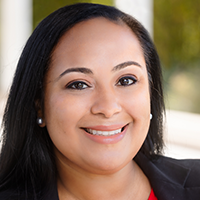The Transformative Power of Coaching in the Legal Field
By Marta Manus and Megan M. Moore
Personal Perspectives
By Marta Manus and Megan M. Moore
Personal Perspectives
By Shelly Skinner
California’s legal ethics rules are designed to protect the public and the integrity of the legal system, while promoting the administration of justice and confidence in the legal profession. Cal. Rule of Prof. Conduct 1.0. Attorney candor is crucial to achieving these aims. While the legal ethics rules set forth many aspects of the duty of candor, this article will focus on the duty to communicate settlement offers in civil matters.

Feb. 24, 2022: Millions across the world watched in horror as Russia invaded Ukraine. A war that, to date, has resulted in tens of thousands of casualties and a mass exodus from Ukraine seeking safe haven.
By Mallory H. Chase
Although nonlawyers are not directly governed by the California Rules of Professional Conduct (see CRPC, rule 1.0(a) [the “rules are intended to regulate professional conduct of lawyers through discipline”] [emphasis added]), rule 8.4 provides that it is professional misconduct for a lawyer to “violate these rules or the State Bar Act, knowingly* assist, solicit, or induce another to do so, or do so through the acts of another[.]”[1] (CRPC, rule 8.4(a).) Additionally, under CRPC, rule 5.3, managerial and supervisory lawyers must make reasonable efforts to ensure the conduct of nonlawyers who are employed by, retained by, or associated with the lawyer is compatible with lawyer’s professional obligations. Among those professional obligations is the prohibition on certain types of solicitations, as delineated in CRPC, rule 7.3.[2]
By David C. Carr
The Fourth District Court of Appeal, Division 3, has a new opinion, Falcon Brands v. Mousavi & Lee L.L.P. (case no. G059477, filed 1/27/22), that adds to our knowledge of one of the more opaque issues in legal ethics: when do a lawyer’s demands to settle become extortion?
By Anne M. Rudolph
In 2018, the Supreme Court rejected a proposed modified version of Model Rule 1.14 which would have allowed an attorney to take protective action if the attorney reasonably believed that the client had diminished capacity, was unable to act in the client’s own interest, and was at significant risk of physical, psychological or financial harm. Though the Supreme Court did not state its reason for the rejection, it is understood that the proposed rule was rejected because taking such protective action would have required an attorney to disclose a client’s confidential information in contradiction of the attorney’s duty under Business and Professions Code 6068, subdivision (e).